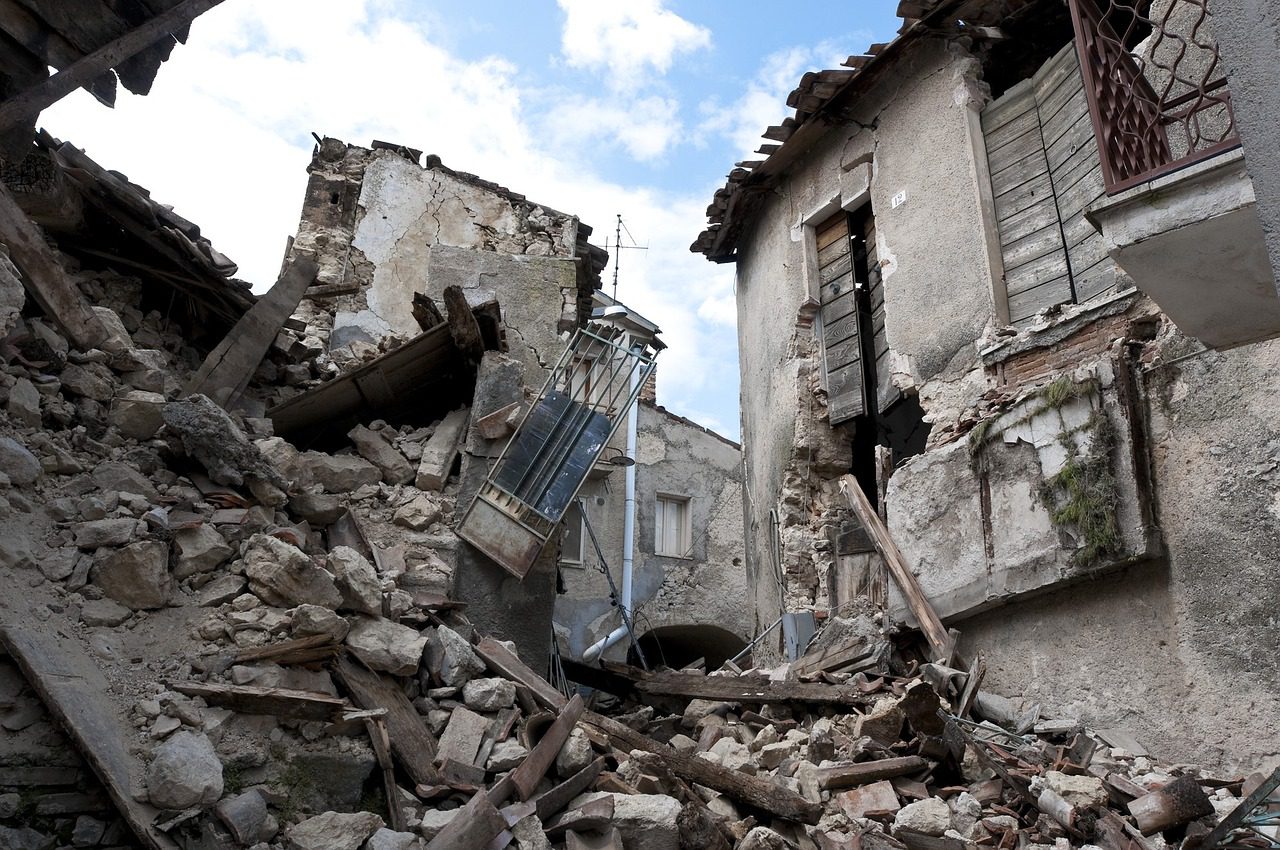The specter of cross-border terrorism emanating from Pakistan has long cast a shadow over India’s national security landscape. For decades, India has grappled with the challenge of terrorist groups operating from across its western border, orchestrating attacks that have claimed countless innocent lives and threatened the nation’s stability. In response to this persistent menace, India has, at times, exercised strategic restraint, while at other junctures, it has adopted more assertive measures. The recent Pahalgam terror attack served as a stark reminder of the continued threat, ultimately triggering a firm and decisive military action by India codenamed ‘Operation Sindoor’. This operation signifies a notable shift in India’s counter-terrorism strategy, underscoring its unwavering commitment to dismantle terrorist infrastructure and deter future attacks against its citizens.1 The very name of the operation, ‘Sindoor’ – the vermilion mark worn by married Hindu women – carries a powerful symbolism, directly referencing the tragic loss of husbands in the Pahalgam attack and underscoring the pursuit of justice for the victims.2

The Precursor: Pahalgam Terror Attack and the Nation’s Anguish
The tranquility of Pahalgam, a popular tourist destination nestled in Jammu & Kashmir’s Anantnag district, was shattered on April 22, 2025, by a heinous act of terror.1 On that fateful day, 26 lives were tragically cut short, including 25 Indian tourists and one Nepali citizen.1 The terrorists, in a display of extreme brutality, reportedly rounded up the male tourists, inquired about their religion, and then cold-bloodedly shot them in front of their horrified family members.2 Responsibility for this barbaric attack was initially claimed by The Resistance Front (TRF), an organization widely believed to be a proxy for the Pakistan-based Lashkar-e-Taiba (LeT).2
The Pahalgam massacre sent shockwaves across India, igniting widespread grief and intense public outrage.2 The sheer brutality of the attack, particularly the targeting of unarmed civilians and the apparent religious profiling of the victims, deeply resonated with the national consciousness. Prime Minister Narendra Modi, in the immediate aftermath, strongly condemned the attack and made a solemn vow to punish the perpetrators and those behind the conspiracy, promising a response that would inflict pain “beyond their imagination”.1 The government echoed this sentiment, expressing its unwavering determination to send an unequivocal message against cross-border terrorism and to hold those responsible accountable.2 The targeting of tourists and the specific singling out of individuals based on their religious identity were perceived as crossing fundamental “red lines,” necessitating a strong and decisive response.4 The emotional weight of the Pahalgam attack, particularly the plight of the 25 women who were widowed, further fueled the demand for justice and retribution. The choice of the name ‘Operation Sindoor’ itself reflects this sentiment, directly linking the military action to the profound loss suffered by these women.
Operation Sindoor: A Timeline of Strategic Action
The operation that followed the Pahalgam terror attack was not an impulsive reaction but rather a carefully orchestrated strategic move. According to reports, ‘Operation Sindoor’ was planned meticulously over a period of approximately 12 days.12 This planning phase involved a thorough formulation of the operation’s modus operandi, ensuring that the strategy to target the identified terrorist infrastructure was robust and sound.12 A critical aspect of the planning was maintaining secrecy and agility. India reportedly adapted its strategies continuously to ensure that terrorist intelligence networks remained unaware of the impending response, thereby preventing them from anticipating India’s actions.12 This focus on secrecy and meticulous planning underscores the calculated nature of India’s response.
The execution phase of ‘Operation Sindoor’ commenced in the early hours of Wednesday, May 7, 2025.1 While the exact start time varies slightly across sources, the strikes began around 1:05 AM and continued for approximately 25 minutes.1 Some reports indicate the operation started at 1:44 AM.1 The operation was a joint effort primarily involving the Indian Army and the Indian Air Force.3 Some sources also suggest a broader tri-services coordination, encompassing the Army, Navy, and Air Force, indicating a unified national response.4 During this brief but intense period, Indian forces unleashed 24 precision missile strikes.1 These strikes were strategically directed at nine identified terror camps located in both Pakistan and Pakistan-Occupied Kashmir (PoK).1 The coordinated timing and the sheer number of strikes across multiple locations within such a short timeframe suggest a highly synchronized and intense operation, designed to overwhelm the targeted infrastructure and maximize its impact. The potential involvement of all three branches of the Indian armed forces, even if primarily in a coordinating or supporting role, further highlights the strategic significance and scale of ‘Operation Sindoor’.
Unveiling the Targets: Dismantling Terror Infrastructure
‘Operation Sindoor’ meticulously targeted nine key locations, five situated in Pakistan-Occupied Kashmir (PoK) and four within mainland Pakistan, all identified as significant components of the terrorist infrastructure operating against India.
In PoK, the targeted sites included the Sawai Nala Camp in Muzaffarabad, a known training facility of Lashkar-e-Taiba (LeT) with links to attacks in Sonamarg and Gulmarg in 2024, as well as the recent Pahalgam attack.9 Also in Muzaffarabad was the Syedna Bilal Camp, associated with Jaish-e-Mohammed (JeM) and strategically located near the Red Fort.9 The Gulpur Training Camp in Kotli, approximately 30 kilometers from the Line of Control (LoC), an LeT camp known as a hub for suicide bomber training and linked to the Poonch attack in 2023 and the Reasi bus attack in 2024, was also struck.1 This camp was reportedly destroyed at 1:08 AM 1 and had the capacity to host over 50 trainees.9 Another target in Kotli was Markaz Abbas, an LeT camp situated about 13 kilometers from the LoC opposite Rajouri, identified as a nerve center for training suicide bombers.11 Finally, the Maskar Raheel Shahid Gulpur Camp, also in Kotli and about 30 kilometers from the LoC, an LeT camp linked to the Poonch attack in 2023 and a pilgrimage bus attack in 2024, was targeted.11
Within Pakistan, the operation focused on four key locations. Muridke, in the Punjab province, serves as the notorious headquarters of Lashkar-e-Taiba (LeT) and has been described as a “terror nursery” where individuals like David Headley and Ajmal Kasab, the perpetrators of the 26/11 Mumbai attacks, received their training.1 This location was reportedly hit twice during the operation.1 Bahawalpur, also in Punjab, is a well-known stronghold and headquarters of Jaish-e-Mohammed (JeM) and was claimed to have been completely damaged in the strikes.1 Markaz Subhan Allah, a significant JeM facility, is located in Bahawalpur.16 The Sarjal camp in Sialkot, situated approximately 6 kilometers inside Pakistan, was identified as an LeT camp that trained terrorists involved in the killing of four J&K police personnel.11 Additionally, the Mehmoona Joya Facility, belonging to Hizbul Mujahideen, is also located in Sialkot and serves as a major camp and a key control center for terrorism in the Kathua-Jammu region, with reported links to the Pathankot air force base attack.11 Pakistan also mentioned Chak Amru as a location that was struck, although specific details about this target are unclear from the available information.4
These targeted locations held significant strategic importance, functioning as crucial training camps, launchpads, and control centers for various terrorist organizations. They served as hubs for the recruitment, indoctrination, and training of terrorists, including specialized training in weapons handling and suicide bombing.3 These camps were also instrumental in planning and launching numerous terrorist attacks against India over the years. Several of these locations have direct connections to past major terrorist incidents. The Muridke camp, for instance, is infamous for its role in training the perpetrators of the devastating 26/11 Mumbai attacks.2 The launchpads across the LoC were the focus of the surgical strikes following the Uri attack in 2016 2, while a Jaish-e-Mohammed training facility in Balakot was targeted after the Pulwama attack in 2019.2 The Sawai Nala camp is believed to be linked to the recent Pahalgam attack 2, and other targeted sites have been associated with attacks in Sonmarg, Gulmarg (2024), Poonch (2023), the Reasi bus attack (2024), and the Pathankot air force base attack.9 Some of these camps were even reportedly visited by key terrorist leaders, such as Zaki-ur-Rehman Lakhvi, the mastermind behind the 26/11 attacks, for indoctrination and motivational speeches.13 By targeting this extensive network of terrorist infrastructure, India aimed to significantly disrupt the operational capabilities and command structures of these groups that have been responsible for perpetrating violence against the nation for far too long.
Table 1: Targeted Locations in Operation Sindoor
| Location Name | Region | Alleged Affiliation | Strategic Significance |
| Sawai Nala Camp | Muzaffarabad (PoK) | Lashkar-e-Taiba (LeT) | Training for attacks in Sonamarg, Gulmarg, and Pahalgam |
| Syedna Bilal Camp | Muzaffarabad (PoK) | Jaish-e-Mohammed (JeM) | Located near Red Fort, part of JeM’s infrastructure |
| Gulpur Training Camp | Kotli (PoK) | Lashkar-e-Taiba (LeT) | Suicide bomber training, linked to Poonch (2023) and Reasi (2024) attacks |
| Markaz Abbas | Kotli (PoK) | Lashkar-e-Taiba (LeT) | Nerve center for training suicide bombers |
| Maskar Raheel Shahid Gulpur Camp | Kotli (PoK) | Lashkar-e-Taiba (LeT) | Linked to Poonch (2023) and pilgrimage bus attack (2024) |
| Muridke | Pakistan (Punjab) | Lashkar-e-Taiba (LeT) | Headquarters, training site for 26/11 Mumbai attackers |
| Bahawalpur | Pakistan (Punjab) | Jaish-e-Mohammed (JeM) | Headquarters, stronghold of JeM |
| Sarjal camp | Sialkot (Pakistan) | Lashkar-e-Taiba (LeT) | Trained terrorists involved in killing J&K police personnel |
| Mehmoona Joya Facility | Sialkot (Pakistan) | Hizbul Mujahideen (HM) | Major camp and control center, linked to Kathua-Jammu region terrorism and Pathankot attack |
| Chak Amru | Pakistan | (Mentioned by Pakistan) | Details unclear from provided information |
Method of Execution: Precision and Restraint

The execution of ‘Operation Sindoor’ underscored India’s focus on achieving precise targeting while exercising strategic restraint. The weaponry employed in the operation included a mix of ground-launched and air-launched missiles.3 Reports also suggest the use of sophisticated precision munitions, potentially including loitering drones.6 One source further specified the use of SCALP cruise missiles, HAMMER precision-guided bombs, and advanced loitering munitions.11 The deployment of such advanced weaponry highlights India’s commitment to minimizing collateral damage and ensuring that only the intended terrorist targets were neutralized.
A key aspect of the operation was the emphasis on intelligence-based targeting. The selection of targets was reportedly based on credible intelligence inputs, meticulously gathered and analyzed.8 The locations were specifically chosen to avoid damage to civilian installations and to prevent the loss of civilian lives.8 In line with this objective, the Indian government asserted that no Pakistani military facilities were targeted during the operation.3 Government sources further claimed that civilian casualties were minimized through this precision targeting.3 However, it is important to note that Pakistan has disputed these claims, alleging that Indian attacks did hit civilian areas, including mosques, and resulted in civilian casualties.10
‘Operation Sindoor’ also employed what has been described as a “zero-intrusion strategy.” The strikes were reportedly executed from within Indian airspace, demonstrating a calculated restraint in both targeting and the method of execution.16 The use of standoff weapons further minimized any potential breach of Pakistani airspace, thereby reducing the risk of escalation.6 This approach contrasts with previous instances where airspace violations occurred, highlighting a deliberate effort to conduct a targeted counter-terrorism operation while avoiding actions that could be interpreted as a broader military aggression.
Political Landscape: Domestic Consensus and Diplomatic Maneuvering
The political landscape surrounding ‘Operation Sindoor’ was characterized by a strong domestic consensus in India and intense diplomatic activity aimed at managing the international fallout. The Indian government issued official statements emphasizing that the operation was a “measured, non-escalatory, proportionate, and responsible” response to Pakistan’s continued support for terrorism.2 The stated objective was to dismantle terrorist infrastructure and neutralize terrorists who were likely to be sent across the border to perpetrate attacks in India.7 The government asserted that India was exercising its inherent right to respond to deter further cross-border terrorism.3 Foreign Secretary Vikram Misri, accompanied by senior military officials, addressed the media to provide details of the operation, underscoring its intelligence basis and the precision of the strikes.3 The overarching message was that ‘Operation Sindoor’ was undertaken to deliver justice to the victims of the Pahalgam terror attack and their families.8
Domestically, the response to ‘Operation Sindoor’ was largely one of support across the political spectrum. The main opposition party, the Indian National Congress, called for national unity and expressed immense pride in the armed forces’ action.25 Other opposition leaders, such as Rahul Gandhi, extended their best wishes to the armed forces 5, while Shashi Tharoor and Kapil Sibal also publicly lauded the operation.5 This broad consensus highlights the national sentiment against cross-border terrorism and the widespread support for decisive action to protect India’s security.
In stark contrast, Pakistan vehemently condemned ‘Operation Sindoor’, with Prime Minister Shehbaz Sharif denouncing the strikes as an “act of war” and vowing a forceful response.4 Pakistan reiterated its denial of any involvement in the Pahalgam terror attack 7 and claimed that the Indian attacks had targeted civilian areas, including mosques, resulting in significant civilian casualties.10 The Pakistani military spokesperson went so far as to claim that their forces had shot down several Indian fighter jets 23, a claim that India has not confirmed. Pakistan also accused India of violating international norms by allegedly damaging infrastructure at a dam 23 and warned of a response “at a time and place of our own choosing”.4
Recognizing the international implications of its actions, India engaged in proactive diplomatic maneuvering. Immediately after the operation, India briefed permanent and non-permanent members of the United Nations Security Council (UNSC) on ‘Operation Sindoor’.5 National Security Advisor Ajit Doval reportedly held conversations with his counterparts in several key countries, including the United States, the United Kingdom, Saudi Arabia, and the United Arab Emirates, conveying India’s message that while it had no intention to escalate tensions, it was fully prepared to retaliate resolutely if Pakistan chose to escalate the situation.16 Prior to the operation, India had already made efforts to highlight the “cross-border link” to the Pahalgam attack by briefing diplomats from numerous countries.28 Following the strikes, India continued its diplomatic outreach, briefing close partners such as the US, UK, Russia, Saudi Arabia, and UAE.7 These diplomatic efforts were aimed at explaining India’s rationale, building international understanding for its actions against terrorism, and managing potential adverse reactions from the global community.
Global Reactions: A World Divided on the Response
The international community’s reaction to ‘Operation Sindoor’ was varied, reflecting the complex geopolitical dynamics at play. The United States, through President Trump, termed the situation a “shame” and expressed hope for a swift end to the tensions.5 Secretary of State Rubio stated that he was closely monitoring the situation and urged a peaceful resolution.34 The US embassy in Pakistan issued a “Do Not Travel” advisory for areas near the India-Pakistan border.22 China expressed its regret over India’s military action and conveyed its concern regarding the developments, calling on both sides to exercise restraint and emphasizing its opposition to all forms of terrorism.1 Beijing also offered to play a constructive role in de-escalating the tensions.34 Russia echoed these concerns, stating its deep worry about the escalation and urging both India and Pakistan to show restraint while condemning terrorism.30 The United Kingdom called for restraint and dialogue between the two nations, offering its support for de-escalation efforts.1 France acknowledged India’s desire to protect itself from terrorism but also urged both countries to exercise restraint and ensure the protection of civilians.30 In contrast, Israel explicitly backed India’s right to self-defense, asserting that terrorists should have no safe haven.30 Japan condemned the Pahalgam terror attack, expressed concern about the potential for further escalation, and called for restraint and dialogue to ensure peace and stability in South Asia.30 Qatar stated its deep concern over the ongoing escalation and called for a resolution through diplomatic channels.30 Turkey urged both India and Pakistan to act with common sense, warning that India’s military action risked triggering an “all-out war,” and reiterated its support for Pakistan’s demand for an investigation into the Pahalgam attacks.30 The United Arab Emirates called on both nations to exercise restraint, de-escalate tensions, and avoid any further actions that could threaten regional and international peace.30
International organizations also voiced their concerns. United Nations Secretary-General António Guterres expressed his profound concern about the Indian military operations across the Line of Control and the international border. He called for maximum military restraint from both India and Pakistan, emphasizing the dire consequences of a military confrontation between the two nuclear-armed neighbors.25
Overall, the international community’s perspective on the escalation was one of significant concern. There was a general consensus on the critical need for de-escalation and the avoidance of a full-scale war between India and Pakistan, particularly given their nuclear capabilities.28 While many nations condemned terrorism, there were also strong concerns about regional stability and the respect for national sovereignty. Some countries showed an understanding of India’s rationale for acting in self-defense after repeated terrorist attacks originating from Pakistani soil. The reactions highlighted a delicate balancing act, acknowledging India’s legitimate security concerns while simultaneously urging restraint to prevent further escalation in a region fraught with historical tensions.
The Aftermath: Assessing the Impact and the Road Ahead
The immediate aftermath of ‘Operation Sindoor’ was marked by conflicting claims regarding casualties and damage, as well as a heightened state of alert on both sides of the border. India claimed that over 70 terrorists were killed and more than 60 were wounded in the strikes.1 Some sources even reported over 80 terrorists killed 37, and that 10 family members of Jaish-e-Mohammed chief Masood Azhar were among those killed.1 In contrast, Pakistan reported significantly different casualty figures, initially stating that at least 26 people were killed and dozens wounded in the missile attacks on Punjab province and Pakistan-administered Kashmir.22 Later claims mentioned at least 8 civilians killed and more than 35 wounded 31, with some sources indicating 9 civilian deaths, 38 injured, and two missing.15 Pakistan also claimed that 26 civilians, including women and children, were killed and 46 more injured 23, and that 5 people were killed in Pakistan during subsequent cross-border firing.25 On the Indian side, casualties were also reported due to retaliatory firing from Pakistan in Indian-administered Kashmir, with India claiming at least 10 killed and more wounded 22, and later reports mentioning 7 civilians killed and 30 wounded by Pakistani shelling in the Poonch district.25
Regarding the damage inflicted on the targeted infrastructure, India asserted the destruction of command centers, training camps, arms depots, and staging facilities, with UAV reconnaissance confirming the successful targeting.3 Locals in Pakistan-administered Kashmir reported artillery impact, shrapnel damage to rooftops and walls, and evidence of aerial explosions.1 However, Pakistan claimed that the Indian strikes had caused damage to civilian areas, including mosques and a dam.22
Pakistan’s immediate response to ‘Operation Sindoor’ included shutting down its airspace 1, although some airports were later reopened.25 The Pakistani air force was placed on high alert 16, and the government warned that it would respond to India’s action at a time and place of its own choosing.16 Reports also indicated that Pakistan test-fired ballistic missiles in the aftermath 22 and began mobilizing its armed forces for a broader response.23 Furthermore, Pakistani forces resorted to artillery firing across the Line of Control (LoC) and the International Border (IB) 1 and reiterated their claim of having shot down Indian jets.23
In anticipation of a potential response from Pakistan, India took immediate steps to bolster its security. The Indian armed forces were reportedly fully prepared to face any escalatory misadventure from Pakistan 2, with the Army Chief stating India’s readiness to deal with any such situation.2 Security was heightened along the border 26, and airports in Srinagar, Jammu, and Leh were temporarily closed.26 Across India, security drills and blackouts were conducted to test the preparedness of civilian defense mechanisms.1
‘Operation Sindoor’ represents a significant escalation in the already strained relationship between India and Pakistan, described by some as the most serious military clash in over two decades.27 The operation has been seen as puncturing Pakistan’s deterrence against India and undermining the credibility of its threats.19 It has also raised the cost of cross-border terrorism for Pakistan.6 However, it has simultaneously increased the risk of a wider conflict between the two nuclear-armed neighbors 25 and led to a further deterioration of their already fragile diplomatic ties.10 In the aftermath of the Pahalgam attack, India had already suspended its participation in the Indus Waters Treaty and imposed a ban on bilateral trade with Pakistan.6 Pakistan, in turn, threatened to suspend the Simla Agreement.10 Both countries had also expelled each other’s diplomats and nationals and closed their borders and airspace.10 The long-term impact of ‘Operation Sindoor’ on regional peace and security remains uncertain and will heavily depend on how both nations manage their relationship in the coming days and address the underlying issues that continue to fuel their animosity. International diplomatic efforts will undoubtedly play a crucial role in preventing further escalation and fostering a path towards dialogue and stability.
Conclusion: Projecting Strength and Safeguarding National Interests
‘Operation Sindoor’ stands as a clear demonstration of India’s unwavering stance against terrorism and its readiness to undertake decisive military action to safeguard its national interests. The operation underscores India’s commitment to a policy of zero tolerance for terrorism emanating from its soil or across its borders.8 It also signifies the establishment of a new, more assertive deterrence doctrine against Pakistan-sponsored terrorism.6 India has made it unequivocally clear that it will not hesitate to identify, track, and punish every terrorist and their backers who attempt to threaten the nation’s security.7
The message sent by ‘Operation Sindoor’ is directed both at Pakistan and the wider international community. To Pakistan, the operation serves as a potent reminder that India will no longer tolerate cross-border terrorism with impunity and is prepared to take direct action to dismantle terrorist infrastructure operating from its territory. To the international community, India has projected itself as a responsible actor exercising its inherent right to self-defense against terrorism, emphasizing the precision of its strikes and its commitment to avoiding escalation and civilian casualties, despite Pakistan’s counter-narrative.
Looking ahead, ‘Operation Sindoor’ has undoubtedly increased tensions and the immediate risk of conflict in the South Asian region. The long-term implications for regional peace and security will depend on a multitude of factors, most critically on how India and Pakistan choose to manage their complex and often volatile relationship. Addressing the underlying issues that fuel cross-border terrorism and fostering an environment conducive to dialogue and mutual trust will be paramount. In this context, the continued engagement and diplomatic efforts of the international community will be crucial in preventing further escalation and encouraging both nations to pursue a path of peaceful coexistence and regional stability.
Works cited
- Operation Sindoor Live Updates: Over 300 Flights Cancelled, 25 Airports Shut As India-Pak Tensions Escalate – NDTV, accessed May 7, 2025, https://www.ndtv.com/india-news/india-pakistan-tension-live-updates-operation-sindoor-pahalgam-terror-attack-jammu-and-kashmir-military-strike-latest-news-bahawalpur-8348396
- Before ‘Sindoor’ There Was ‘Meghdoot’, ‘Vijay’: Past Military Ops Against Pak – NDTV, accessed May 7, 2025, https://www.ndtv.com/india-news/operation-sindoor-news-india-attacks-pak-terror-training-camps-kargil-war-vijay-meghdoot-siachen-glacier-1965-india-pak-war-8352527
- 24 Strikes, 9 Terror Camps, 70 Killed: India Rained Hell For 25 Minutes – NDTV, accessed May 7, 2025, https://www.ndtv.com/india-news/operation-sindoor-india-pakistan-indias-op-sindoor-25-minutes-24-missile-strikes-9-terror-camps-70-killed-8351374
- Why India Named Its Pahalgam Counterstrike Operation Sindoor – NDTV, accessed May 7, 2025, https://www.ndtv.com/india-news/operation-sindoor-pahalgam-terror-attack-why-india-named-its-pahalgam-counterstrike-operation-sindoor-8349722
- India Attacks Pakistan | What Wives Of Pahalgam Massacre Victims Said About Operation Sindoor – NDTV, accessed May 7, 2025, https://www.ndtv.com/video/india-attacks-pakistan-what-wives-of-pahalgam-massacre-victims-said-about-operation-sindoor-936163
- With Operation Sindoor, India’s red line for Pakistan is firmly etched – The Economic Times, accessed May 7, 2025, https://m.economictimes.com/news/defence/with-operation-sindoor-indias-red-line-for-pakistan-is-firmly-etched/articleshow/120965847.cms
- In Retaliation for Pahalgam Attack, India Strikes Pakistan-based Terror Camps, accessed May 7, 2025, https://thediplomat.com/2025/05/in-retaliation-for-pahalgam-attack-india-strikes-pakistan-based-terror-camps/
- ‘Targets chosen on credible intel’: Govt shares details of India’s ‘Operation Sindoor’, accessed May 7, 2025, https://timesofindia.indiatimes.com/india/targets-chosen-on-credible-intel-govt-shares-details-of-indias-operation-sindoor/articleshow/120947621.cms
- Operation Sindoor: Complete Breakdown of Terror Targets – The Probe, accessed May 7, 2025, https://theprobe.in/security/operation-sindoor-complete-breakdown-of-terror-targets-9043419
- Operation Sindoor: What’s the significance of India’s Pakistan targets? – Al Jazeera, accessed May 7, 2025, https://www.aljazeera.com/news/2025/5/7/operation-sindoor-whats-the-significance-of-indias-pakistan-targets
- Operation Sindoor | 25 minutes, 9 terror camps, at least 70 terrorists …, accessed May 7, 2025, https://timesofindia.indiatimes.com/india/25-minutes-9-terror-camps-at-least-70-terrorists-how-indian-army-executed-operation-sindoor/articleshow/120957537.cms
- Operation Sindoor Timeline: India Planned Missile Strikes Over 12 Days – Deccan Herald, accessed May 7, 2025, https://www.deccanherald.com/india/12-days-of-planning-led-to-operation-sindoor-3529111
- Indian armed forces fully prepared to respond to Pakistani misadventure: Women military officials – The Economic Times, accessed May 7, 2025, https://m.economictimes.com/news/defence/indian-armed-forces-fully-prepared-to-respond-to-pakistani-misadventure-women-military-officials/articleshow/120963419.cms
- India Strikes 4 Terror Bases In Pak, 5 In PoK In Response To Pahalgam – NDTV, accessed May 7, 2025, https://www.ndtv.com/video/india-strikes-4-terror-bases-in-pak-5-in-pok-in-response-to-pahalgam-935933
- “Swift, Surgical, Unapologetically Assertive”: India Kills 70 Terrorists In Pak – NDTV, accessed May 7, 2025, https://www.ndtv.com/india-news/70-terrorists-killed-in-operation-sindoor-at-terror-camps-in-pakistan-sources-8350506
- Operation Sindoor Live Updates: Mock drills being conducted across the nation, Delhi areas under NMDC to face blackout at 8pm – The Economic Times, accessed May 7, 2025, https://m.economictimes.com/news/newsblogs/india-pakistan-war-live-updates-operation-sindoor-indian-army-airforce-pahalgam-terror-attack-mock-drill-blackout-india-news-today/liveblog/120943152.cms
- ‘Justice is served’: Indian Army releases video of precise Operation …, accessed May 7, 2025, https://m.economictimes.com/news/new-updates/justice-is-served-indian-army-releases-video-of-precise-operation-sindoor-strikes-across-terror-camps-in-pakistan/articleshow/120969894.cms
- India strikes terror camps in PoK, Pakistan under ‘Operation Sindoor’ days after Pahalgam attack | Today News – Mint, accessed May 7, 2025, https://www.livemint.com/news/india/india-strikes-terror-camps-in-pok-pakistan-in-operation-sindoor-days-after-pahalgam-attack-11746563482732.html
- Operation Sindoor signals: Three takeaways from India’s action against Pak terror, accessed May 7, 2025, https://indianexpress.com/article/explained/operation-sindoor-3-takeaways-indias-action-pakistan-9988782/
- Uri, Surgical Strikes and International Reactions – IDSA, accessed May 7, 2025, https://idsa.demosl-03.rvsolutions.in/publisher/uri-surgical-strikes-and-international-reactions/
- India and Pakistan must manage escalation after Pahalgam attack – ASPI, accessed May 7, 2025, https://www.aspi.org.au/strategist-posts/india-and-pakistan-must-manage-escalation-after-pahalgam-attack/
- India-Pakistan live: India strikes Pakistan, Pakistan-administered Kashmir | India-Pakistan Tensions News | Al Jazeera, accessed May 7, 2025, https://www.aljazeera.com/news/liveblog/2025/5/6/india-pakistan-fighting-live-india-fires-missiles-into-pakistan
- Indo-Pak border flares as mass civilian deaths fuel war fears after Kashmir massacre – EFE, accessed May 7, 2025, https://efe.com/en/latest-news/2025-05-07/indo-pak-border/
- ‘Act of war’: Pakistan pledges retaliation to Indian deadly attacks – Al Jazeera, accessed May 7, 2025, https://www.aljazeera.com/news/2025/5/7/pakistan-decries-act-of-war-vows-retaliation-as-india-launches-strikes
- Pakistan leader vows to avenge India’s “act of war” after missile strikes – CBS News, accessed May 7, 2025, https://www.cbsnews.com/news/india-pakistan-kashmir-strikes-sharif-revenge-modi/
- Indian armed forces say ‘fully prepared’ to face any ‘escalation’ from Pakistan after Operation Sindoor – The Economic Times, accessed May 7, 2025, https://m.economictimes.com/news/defence/indian-armed-forces-say-fully-prepared-to-face-any-escalation-from-pakistan-after-operation-sindoor/articleshow/120954033.cms
- India launches Operation Sindoor, exchanges heavy fire with Pakistan – Al Jazeera, accessed May 7, 2025, https://www.aljazeera.com/news/2025/5/6/india-launches-attacks-on-several-sites-in-pakistan
- A deadly attack on tourists preceded India’s strikes on Pakistan. Here’s where the rivals stand – AP News, accessed May 7, 2025, https://apnews.com/article/india-pakistan-kashmir-explainer-8594b9e7694e0f3c6b4795e232d01cd9
- Why did India strike Pakistan? All we know about Operation Sindoor …, accessed May 7, 2025, https://www.aljazeera.com/news/2025/5/7/why-did-india-strike-pakistan-all-we-know-about-operation-sindoor
- How world leaders are reacting to India-Pakistan military attacks …, accessed May 7, 2025, https://www.aljazeera.com/news/2025/5/7/how-world-leaders-are-reacting-to-india-pakistan-military-strikes
- ‘High risks’: Indian attacks in Pakistan raise fears of wider conflict, accessed May 7, 2025, https://www.aljazeera.com/news/2025/5/7/high-risks-indian-attacks-in-pakistan-raise-fears-of-wider-conflict
- India-Pakistan clash escalates to intense confrontation – Vatican News, accessed May 7, 2025, https://www.vaticannews.va/en/world/news/2025-05/india-pakistan-clash-escalates-to-intense-confrontation.html
- World Leaders React to India’s Strikes on Pakistan | Vantage with Palki Sharma – YouTube, accessed May 7, 2025, https://www.youtube.com/watch?v=sVTZ-0ed3DQ
- How World Leaders Reacted To Indian Strikes On Terror Camps In Pakistan – NDTV, accessed May 7, 2025, https://www.ndtv.com/world-news/how-world-leaders-reacted-to-indian-strikes-on-terror-camps-in-pakistan-8349407
- India-Pakistan Conflict Escalates and Other Headlines of the Day, accessed May 7, 2025, http://www.cfr.org/article/india-pakistan-conflict-escalates-and-other-headlines-day
- Experts react: India just launched airstrikes against Pakistan. What’s next? – Atlantic Council, accessed May 7, 2025, https://www.atlanticcouncil.org/blogs/new-atlanticist/experts-react/experts-react-india-just-launched-airstrikes-against-pakistan-whats-next/
- Operation Sindoor: Pak Army Attends Terrorists’ Funeral, Openly Fuels Terrorism – YouTube, accessed May 7, 2025, https://www.youtube.com/watch?v=EmYrv13dKNY
- From 1947 war to Operation Sindoor: Tracing India-Pak’s history of clashes – India Today, accessed May 7, 2025, https://www.indiatoday.in/india/story/from-1947-war-to-operation-sindoor-tracing-india-paks-history-of-clashes-2720949-2025-05-07
- Pakistan says it has ‘credible intelligence’ India will attack within days – AP News, accessed May 7, 2025, https://apnews.com/article/india-pakistan-kashmir-pahalgam-attari-wagah-a16c6fc5cf190f0ce0759ad4370a29cc
- https://www.kalikablogs.com/blog/




